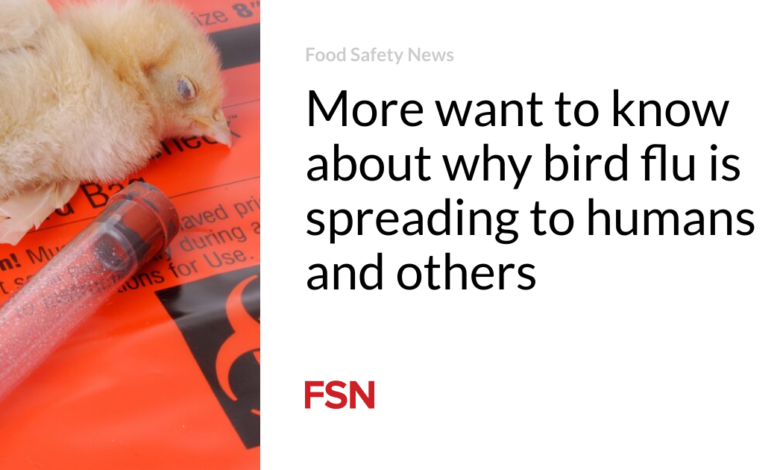More want to know about why bird flu is spreading to humans and others

in the month after H5N1, bird flu spread to more humans, especially dairy cow herds, more experts in the United States are focusing more attention on the issue.
It was unexpected news last month that cows from a milking herd in Texas had tested positive for H5N1, but apparently, pasteurization of milk kills this specific virus.
Meanwhile, the World Health Organization (WHO) is expressing “great concern” over the increase in bird flu cases in humans, Michigan health officials are warning against raw milk, and a prominent journalist is demanding more information from USDA.
These are among the reactions that have occurred since about April 1, when a second human bird flu illness was reported in the United States.
WHO has “great concern” that the bird flu virus might evolve and develop an ability to infect humans.
Michigan put raw or unpasteurized milk on the foods most susceptible to the bird flu virus.
Journalist Helen Branswell, writing for STAT, raises a lot of food safety implications from bird flu, including milk, raw milk, and possible spread from chickens to cattle and even people and/or pigs.
She reports an inevitable failure in either transparency or fast-response research.
USDA claims that since the bird flu outbreak began in early 2022, the department has been practicing “timely and transparent release of information.”
Outside USDA, researchers are demanding the government gather samples on an ongoing basis to check for dangerous changes in the virus, but only a few genetic sequences from this outbreak have been uploaded to GISAID, the Global Initiative on Sharing All Influenza Data,
Previously, it was known as the Global Initiative on Sharing Avian Influenza Data, a global science initiative established in 2008 to provide access to GISAID, an international database widely used by scientists.
Genetic sequences are shared from early in the outbreak, which prevents outside scientists from monitoring if the virus has changed as it has moved from cow to cow or herd to herd.
USDA said it has offered outside scientists copies of a sample virus for research purposes. The department offers that USDA is analyzing other virus outbreaks, and the Centers for Disease Control and Prevention sequences will be shared in the coming days.
(To sign up for a free subscription to Food Safety News,click here)

